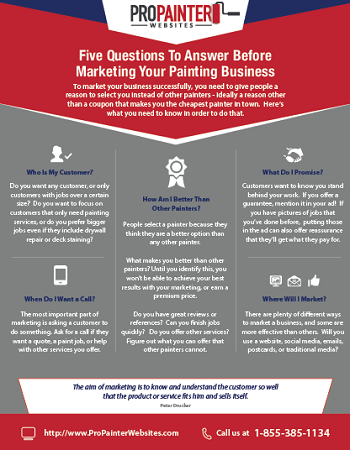Seasonal Factors To Consider For Commercial Exterior Painting: What You Need To Know
Seasonal Factors To Consider For Commercial Exterior Painting: What You Need To Know
Blog Article
Authored By-Doherty Browne
When you're intending an industrial exterior paint job, seasonal variables can make or break your outcomes. You'll wish to take into consideration exactly how temperature level and humidity effect paint application and drying times. Choosing the right period can guarantee your paint adheres effectively and lasts longer. Yet which periods are absolutely the best for this kind of work? Allow's discover the key elements that can influence your task's success.
The Effect of Temperature Level on Paint Application
When you're intending a commercial outside paint task, the temperature can substantially influence exactly how well the paint adheres and dries.
Ideally, you wish to repaint when temperature levels vary between 50 ° F and 85 ° F. If it's also cool, the paint may not heal properly, bring about problems like peeling or cracking.
On the other hand, if it's too hot, the paint can dry also rapidly, stopping correct attachment and resulting in an unequal surface.
You must also consider the time of day; early morning or late afternoon supplies cooler temperature levels, which can be much more desirable.
Always check the manufacturer's recommendations for the details paint you're making use of, as they often provide advice on the excellent temperature array for optimum outcomes.
Moisture and Its Impact on Drying Times
Temperature level isn't the only environmental element that affects your commercial exterior paint project; moisture plays a considerable duty too. High humidity levels can decrease drying times considerably, affecting the total high quality of your paint work.
When the air is saturated with moisture, the paint takes longer to cure, which can result in concerns like poor adhesion and a greater threat of mold development. If https://www.livingetc.com/advice/how-to-paint-laminate-surfaces on an especially moist day, be prepared for extended wait times in between layers.
https://interior-painter-near-me09753.like-blogs.com/34208896/an-important-guide-for-beginners-to-enhance-your-home-with-house-painting to keep track of regional climate condition and plan appropriately. Ideally, aim for moisture levels in between 40% and 70% for ideal drying.
Maintaining these factors in mind guarantees your project stays on track and supplies a long lasting finish.
Best Seasons for Commercial Outside Paint Projects
What's the very best season for your industrial outside paint jobs?
Springtime and very early loss are generally your best bets. Throughout these seasons, temperature levels are light, and moisture levels are often reduced, producing excellent problems for paint application and drying.
Prevent summertime's intense heat, which can create paint to dry as well promptly, leading to bad attachment and surface. In a similar way, winter's cool temperatures can hinder proper drying out and healing, risking the durability of your paint work.
Go for days with temperature levels in between 50 ° F and 85 ° F for optimal outcomes. Bear in mind to examine the local weather prediction for rainfall, as wet problems can wreck your project.
Planning around these variables ensures your painting job runs efficiently and lasts much longer.
Final thought
Finally, planning your industrial external painting jobs around seasonal factors to consider can make a considerable distinction in the end result. By organizing job throughout the perfect temperatures and humidity degrees, you'll make sure much better bond and drying out times. Bear in mind to watch on regional weather prediction and pick the correct time of year-- spring and early fall are your best options. Taking these steps will help you achieve a resilient and expert finish that lasts.
